Beautiful Brussels
Published: Saturday | October 24, 2009
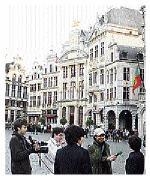
1. Photographers, journalists and other visitors to Brussels make Grand-Place one of the highlights of their trip to the European city. - photos by Damion Mitchell
Perhaps its most striking feature is Grand-Place - the hub of activities Sunday to Sunday where visitors and citizens alike congregate to behold the breathtaking spectacle of ancient architecture, dine in fine style, or just simply spend quality time together.
This is beautiful Brussels, where the sheepish winter breeze in mid-October belies the warmth of so many of its citizens who daily engage in productive encounters.
Brussels is the capital of Belgium - a member state of the European Union (EU).
There, ancient giant buildings form an architect's empire and the stained towering structures still hold their part in the history of a country that's also the headquarters of the EU.
In Brussels, age-old traditions still live on. Unlike in Jamaica, for example, where Sunday walks are a dormant pastime, Belgians have kept it for aeons.
Along the streets of the Belgian capital, men, women and children - lots and lots of them - orderly make their way past each other. Some licking ice cream, sinking their teeth into fresh pastry, while some exchange pleasantries under the pale evening skies.
too grand to miss
I was in Belgium from October 10-16 for a workshop staged by the Technical Centre for Agriculture, looking at the role of the media in agriculture and rural development. But could I resist the temptation to hit the streets the same Sunday I landed? No way!
After several enquiries before leaving my hotel, I was told that Grand-Place was the place to be.
Grand-Place is said to be one of the most beautiful town squares in Europe. History notes that during the 15th century, the square was a political centre, the venue for meetings and executions and the place where dukes, kings and emperors where officially received.
As I made my way along the bustling Rue du Midi en route to Grand-Place, the afternoon chatter faded. My curiosity intensified. There was a crowd, a man suited in a leather outfit, with a black dog and pair of dark glasses.
Before long, the 'show' was on. With the snap of a finger of the leather-suited man, the dog was flat on its tummy, elevating its head on a golden pillow perched on a miniature metal stand. Then the master approached the dog and fitted the sunglasses to its face. With sophisticated elegance, the dog gently repositioned, seemingly posing for the camera.
As applause rained down, cameras flashed and people jostled to take pictures with the 'superstar'. But courtesy dictated that they drop a euro or two into a box placed right next to the dog, before leaving the scene.
alive with history
In Grand-Place, the excitement was swelling. There were different accents, different faces, and different personalities, but the majority of those who almost crammed the square marvelled at the spectacular sight.
The origin of Grand-Place dates back to the 14th century when rich and powerful families replaced small wooden houses around a market at the location with stone mansions. Over time, the market was turned into the main commercial and administrative centre of the city.
But on August 13, 1695, the historic square was bombed on the order of Louis XIV of France in reprisal for a lost battle in Namur (south Belgium).
However, over centuries, the square was rebuilt, and today it's a major tourist attraction in Belgium welcoming thousands of visitors each year.
damion.mitchell@gleanerjm.com
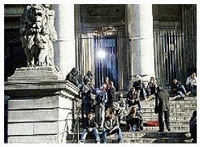
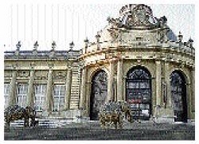
3. Woodcrafted elephants outside the magnificent Royal Museum for Central Africa, in Tervuren, just outside of Brussels. Tervuren is one of the richest municipalities in Belgium.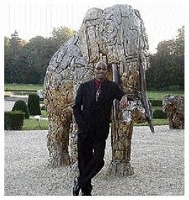 4. Damion Mitchell poses with one of the wood-crafted elephants outside the Royal Museum for Central Africa in Tervuren, Belgium. - Contributed
4. Damion Mitchell poses with one of the wood-crafted elephants outside the Royal Museum for Central Africa in Tervuren, Belgium. - Contributed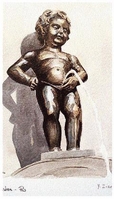
5. An artist's representation of Belgium's famous 'Pee-pee Boy' or 'Mannekin Pis'. Records indicate that the original Mannekin Pis was created in 1388 but mystery surrounds its origins. One story is that the Pee-pee Boy was the saviour of the city, drowning out the flames of a fire with his urine.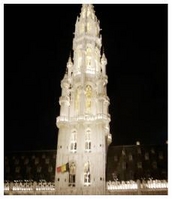
6. One of the towering buildings in Grand-Place at nightfall.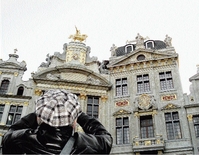
7. A visitor to Grand-Place takes a photo of one of the oldest buildings in the town square.
